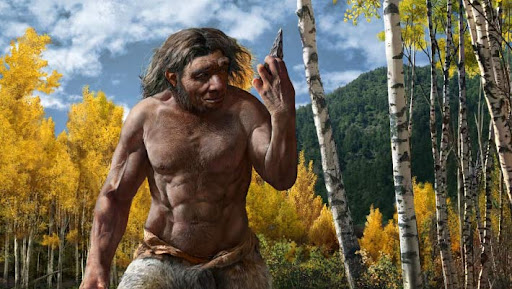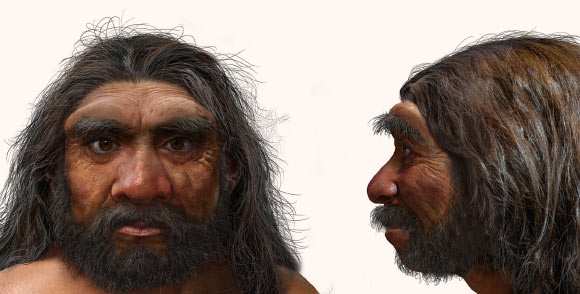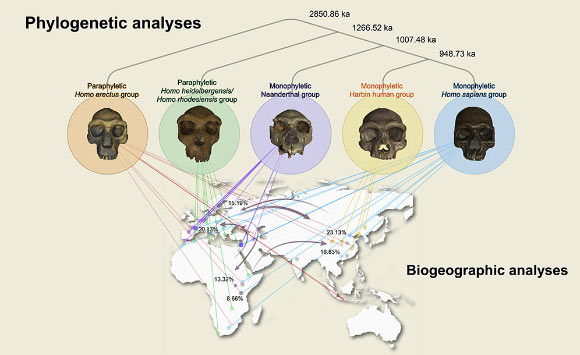Archaic Human Cranium from 146,000 Years Ago Represents New Species: Homo erectus

Archaic Human Cranium from 146,000 Years Ago Represents New Species: Homo erectus
When a bridge was erected across the Songhua River in Harbin City, Heilongjiang province, China, a well-preserved ancient human fossil known as the Harbin skull was reportedly unearthed. Information regarding the precise site and fossil layer was lost because of the unsystematic recovery and the long time interval.

Professor Qiang Ji, a palaeontologist from Hebei GEO University, remarked, “The Harbin fossil is one of the most complete human cranium fossils in the world.”
“Many morphological features were retained, which are important for understanding the development of the Homo genus and the genesis of Homo sapiens.”
The Harbin skull is enormous, dwarfing any other known ancient humans. It’s also short and low, with none of the globularity of a modern human braincase.
It features a broad mouth and big teeth, as well as larger, nearly square eye sockets, thick brow ridges, and a wide mouth.
Homo erectus, Homo naledi, Homo floresiensis, and even certain Homo heidelbergensis/Homo rhodesiensis had higher endocranial capacities than Homo sapiens and Neanderthals.
Professor Ji and colleagues have proposed renaming the skull as a new Homo species. Homo longi is the name given to it.
Long Jiang is a popular name for Heilongjiang province, and it literally means “dragon river.”

“While it has archaic human characteristics, the Harbin skull exhibits a mosaic of primitive and evolved traits that distinguishes it from all other previously-named Homo species,” Professor Ji explained.
Professor Chris Stringer, a paleoanthropologist at the Natural History Museum in London, stated, “The Harbin cranium is enormous, exhibiting either the biggest or second largest values for several parameters in our comparative fossil database, and its brain capacity at 1,420 ml equals that of modern humans.”
“It also has other characteristics that are similar to our species. The face seems reduced and tucked under the braincase, with flat and low cheekbones and a shallow canine fossa.”
The authors assume the Harbin cranium originated from a 50-year-old man who lived in a tiny hamlet in a wooded, floodplain environment.
“They hunted animals and birds, collected fruits and vegetables, and maybe caught fish, just like Homo sapiens,” said Professor Xijun Ni of Hebei GEO University and the Chinese Academy of Sciences.
The researchers used advanced geochemical studies, such as rare earth elements, strontium isotopic ratios, and X-ray fluorescence, as well as direct Ur-series dating, to date the fossil to at least 146,000 years ago, placing it in the Middle Pleistocene, a process of intense human species movement.
They believe Homo longi and Homo sapiens may have crossed paths during this time frame.
“Although it is hard to tie the cranium to a precise site with current technology,” Dr. Junyi Ge, a geochemist at the Chinese Academy of Sciences, stated, “all evidence implies it was from a bed of water-laid sediments aged between 138,000 and 309,000 years ago in the Harbin region.”
Dr. Qingfeng Shao, a geochemist at Nanjing Normal University, adding, “We are fairly certain today that the fossil is older than 146,000 years.”
Professor Stringer explained, “We observe numerous evolutionary lineages of Homo species and communities coexisting in Asia, Africa, and Europe during that time.”
“If Homo sapiens did arrive in East Asia that early, they may have had the opportunity to contact with Homo longi, and because we don’t know when the Harbin group vanished, there may have been further interactions as well.”
Homo longi is also one of our closest hominin cousins, even more so than Neanderthals, according to the researchers.
Professor Ni explained, “It is commonly accepted that the Neanderthal belongs to an extinct lineage that is the closest relative of our own species.”
“However, our findings imply that the new lineage we discovered, which includes Homo longi, is Homo sapiens’ true sister group.”

Professor Ni stated, “The divergence time between Homo sapiens and Neanderthals may be significantly deeper in evolutionary history than widely assumed, spanning over one million years.”
“If this is correct, humans separated from Neanderthals approximately 400,000 years earlier than experts previously believed.”
Professor Stringer stated, “It is commonly considered that Neanderthals are the sapiens lineage’s sibling group.”
“However, our findings imply that the Harbin skull, along with a few other Middle Pleistocene human fossils from China, belong to a third East Asian lineage that is closer to sapiens than the Neanderthals.”
“As a result, the Harbin cranium’s remarkable preservation sheds fresh light on the development of the species Homo.”
“Its Middle Pleistocene age positions it as an Asian contemporary of the developing Homo sapiens, Homo neanderthalensis, and Denisovan lineages,” according to the researchers.
“It might even be a Denisovan representation, but that will have to wait for further investigation.”“It might even be a Denisovan representation, but that will have to wait for further investigation.”